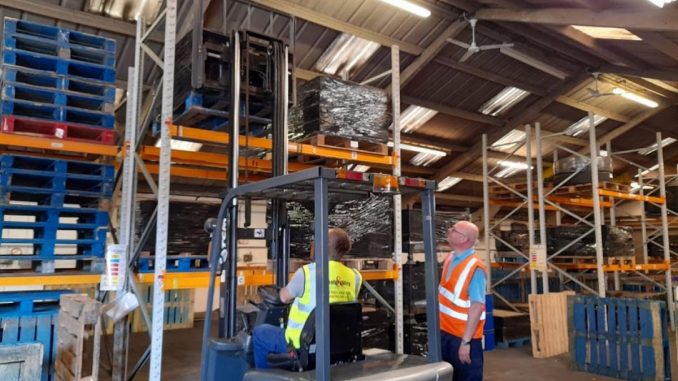
In any working environment, it is essential to identify all the hazards that could cause harm to your employees, visitors, customers and members of the public, and protect against them to keep everyone safe from harm. Of course not all accidents are avoidable, and it is the nature of some work that it is inherently dangerous, so no one expects you to completely negate every hazard – but as an employer you are responsible for the occupational health in the workplace and under a legal duty to do everything ‘reasonably practical.’
As such the first and most important thing you must do is to identify all the dangers present by carrying out a thorough risk assessment. Follow our simple checklist below to make sure you don’t miss anything out…
1 – Identify the hazards
You need to understand exactly what is presenting a risk and how it could cause harm.
Start by having a walk around your premises and ask yourself what could cause a risk or harm to people working there or passing through. Ask your employees what they think poses a risk to them; they may see things differently or have concerns about equipment that you don’t really come into contact with.
Look out for guidance and advice wherever you can get it – a good place to start is the HSE website, but your trade union may be able to offer an insight into identifying risks, and even the manufacturers of the equipment or chemicals you use can help.
Remember to think of things that could pose a long-term risk, such as excessively loud noises from machinery or regular exposure to cleaning substances.
Your accident book and record of ill-health may offer an insight into previous accidents or harm that you should address. You may not notice a one-off incident, but repeated accidents in the same place, for example, could reveal a particularly risky area.
2 – Identify those at risk
Ensuring you understand who is at risk from each hazard and why will help you form a strategy to manage or eliminate the danger. So don’t just consider the risk to an average worker, consider everyone individually.
For example, young workers, pregnant women, disabled people and even migrant workers have additional needs that could put them more at risk or make the consequences of an accident more severe.
Don’t forget infrequent workers or those employed sporadically or out of usual working hours. For example, cleaners and contractors may not appreciate the risks of the environment as well as trained workers so you must remember to take steps to keep them informed and safe.
Similarly, if members of the public have access to your premises, even if they have no reason to be there, or you have a shared workspace, you must consider how your work could affect others.
And again, always remember to ask your employees. They may have a better understanding of the day-to-day tasks and concerns that you could easily be overlooked by others.
3 – Assess the risk
According to law you are under an obligation to take all reasonably practical steps to protect your employees, visitors and any members of the public that may enter your premises. To do this you need to assess the severity of the risk and find a suitable solution.
The best way to assess this is to ask yourself two questions:
Can you eliminate the hazard altogether?
If the problem is something like a bumpy carpet that could cause trips, it is reasonable to expect that you would have it re-laid or replaced to completely get rid of the hazard it presents.
How can you control and reduce the risk?
If the hazard cannot be eliminated because, for example, it forms an integral part of the job, such as dangerous machinery, tools or equipment, you must take reasonable steps to reduce the risks presented and the chances that an accident would occur.
4 – Implement your risk strategies
If you are taking steps to reduce or remove the risk posed by certain hazards, you need to communicate your solutions to all members of staff and ensure they have the required information to keep themselves safe, for example:
- A less risky alternative, such as a less harmful or abrasive cleaning product
- Provide your employees with Personal protective equipment, such as hard hats
- Prevent unauthorised access to hazardous areas, using signage and security devices
- Provide access to welfare facilities for washing to prevent the spread of disease
5 – Review regularly
Every working environment is subject to change, and even subtle changes such as an additional member of staff could alter and increase the risks present at your property. As such, it is essential that you regularly review your policies and strategies to ensure they are still adequate to provide protection.
Carrying out a full risk assessment will ensure that your business is running legally, and you can relax safe in the knowledge that you are doing everything you should to protect your employees, customers and visitors from harm. For more information on risk assessments and training to enable you to carry them out properly, contact the dedicated team at Health and Safety Training Ltd.

Leave a Reply